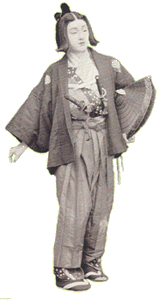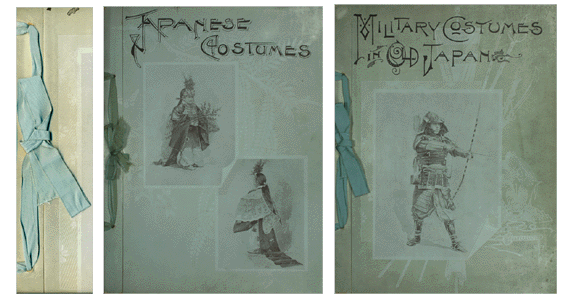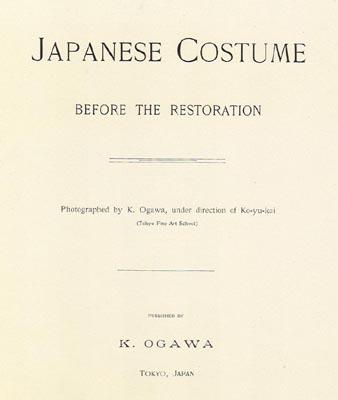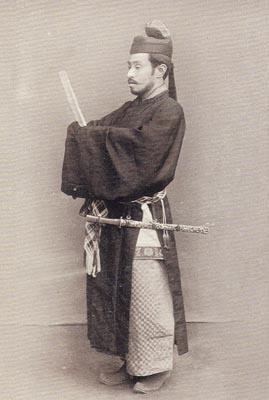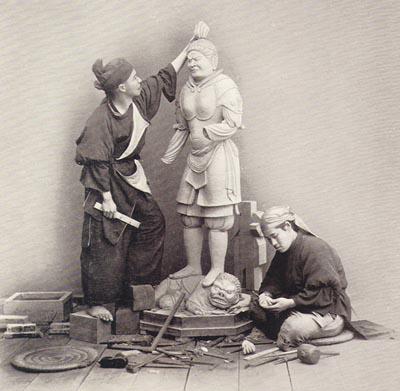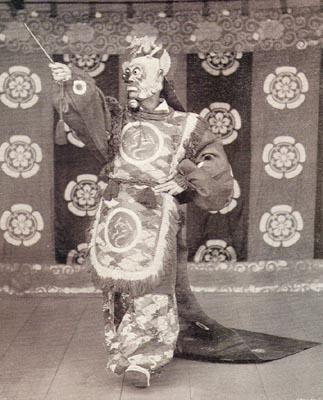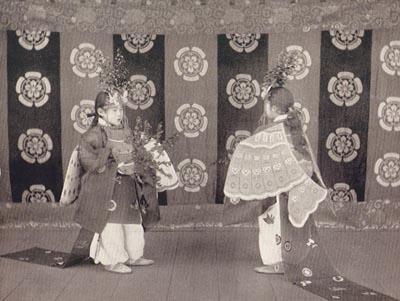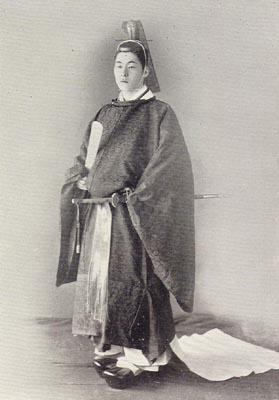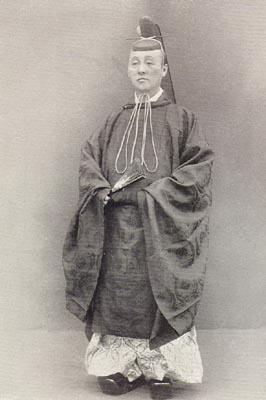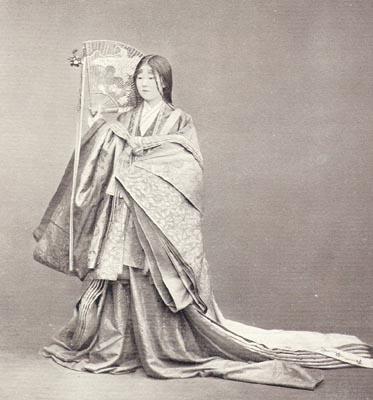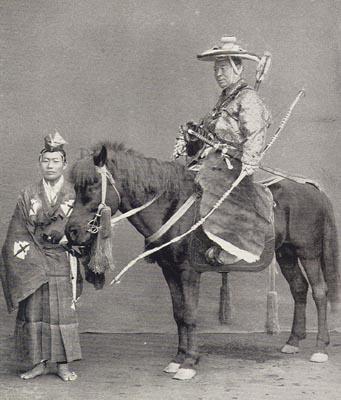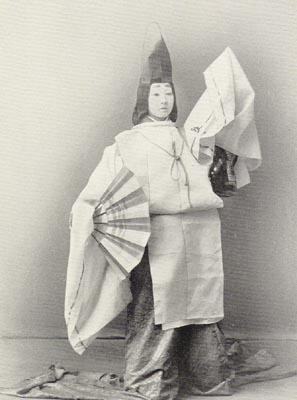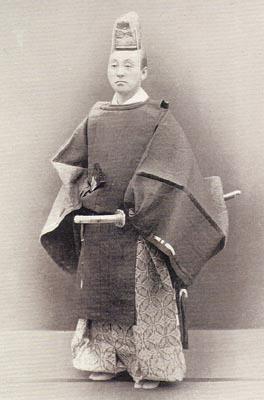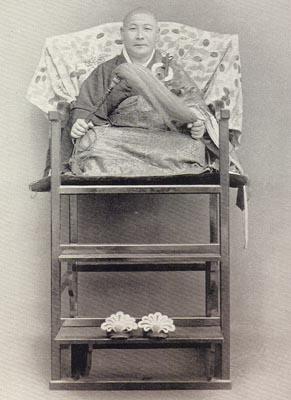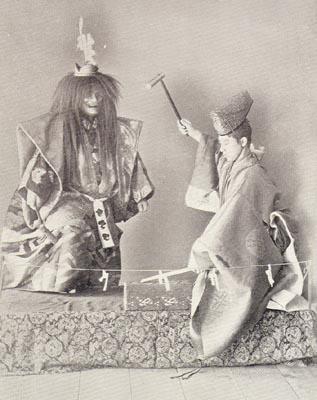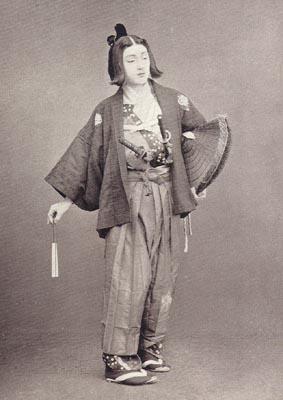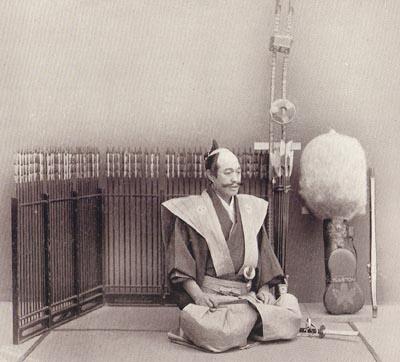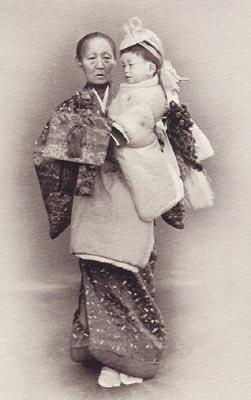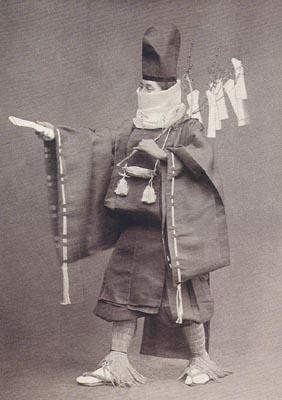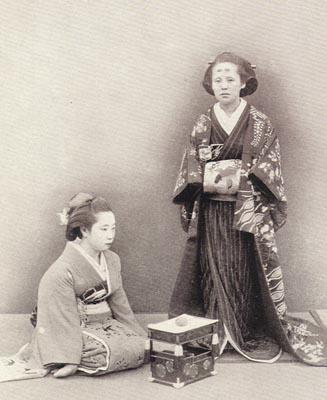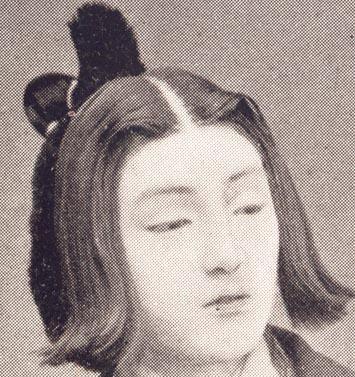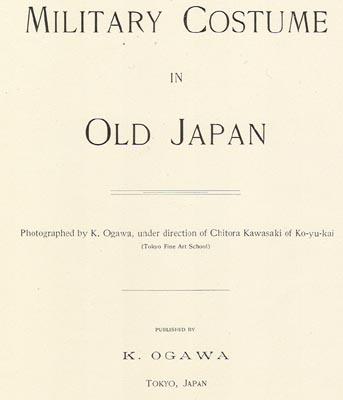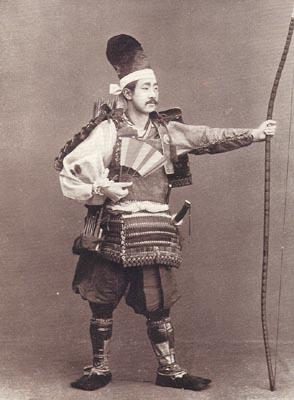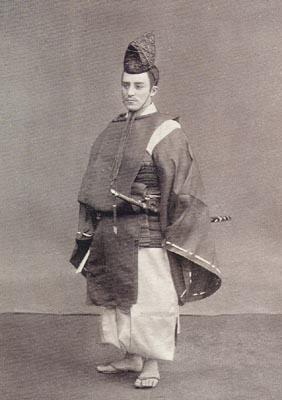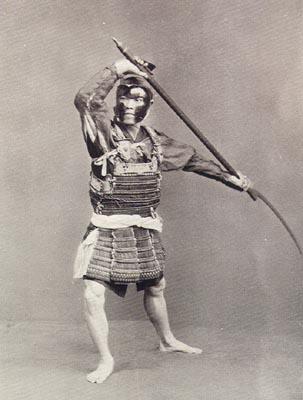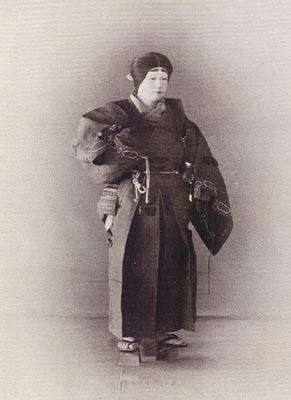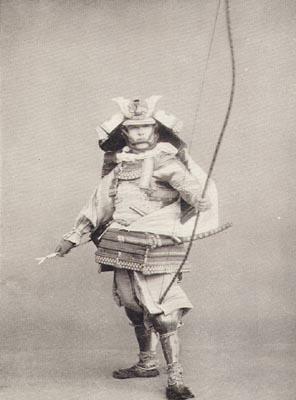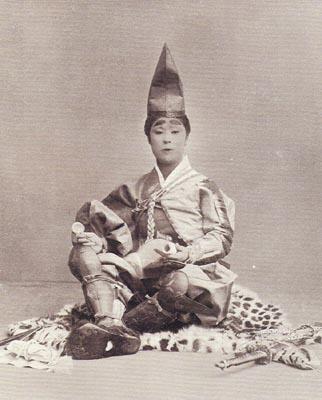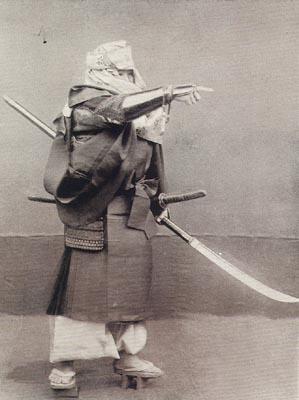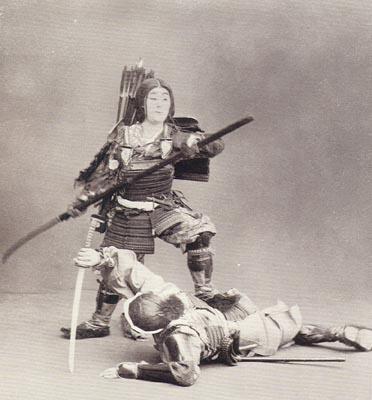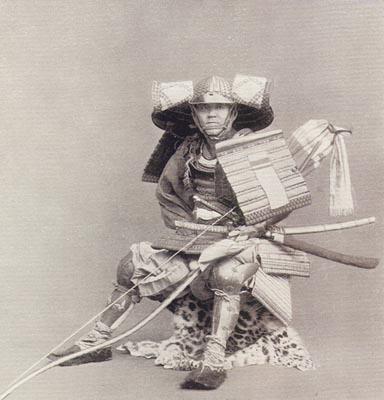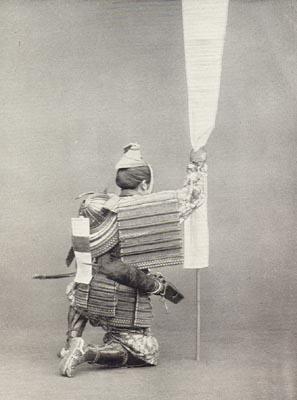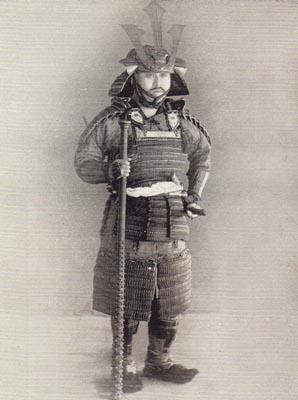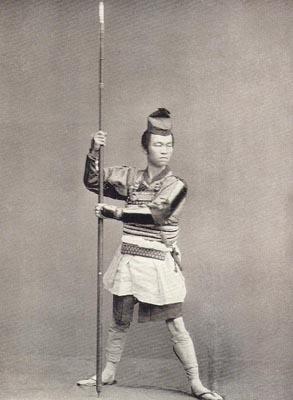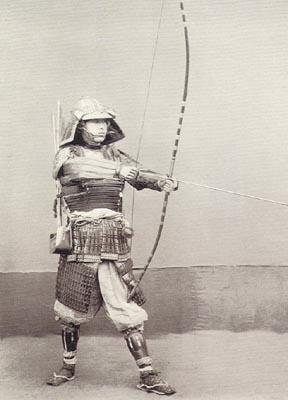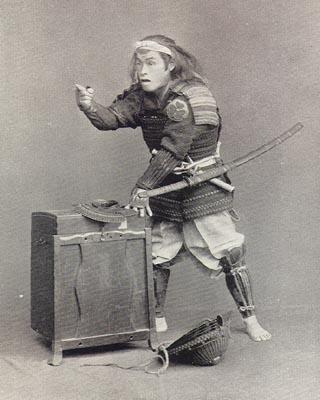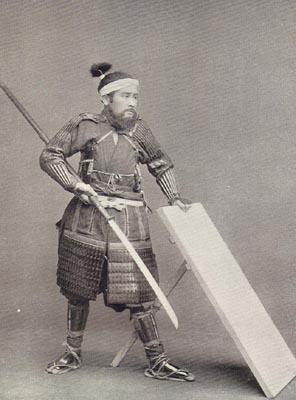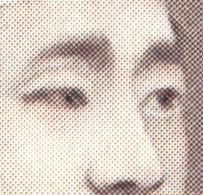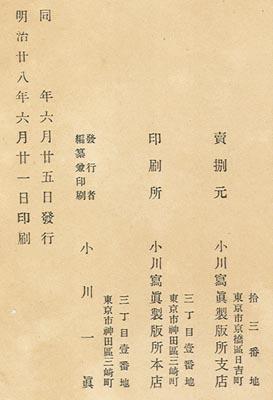~~Book Set 1895090117 ~~
Japanese Costume Before the Restoration
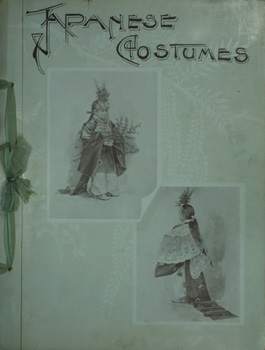 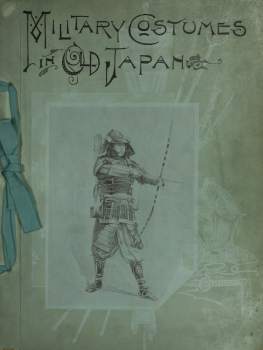 Click on the above pictures to see the front and back covers of both books. |
|
Ogawa, K. (Kazumasa)
Ogawa, K. (Kazumasa) Date of Publication. Wenckstern lists the date of publication for these books as 1894. You often see them listed with the date of 1893, the stated copyright date. I have placed the date of publication as 1895 because I have examined a copy of Military Costume in Old Japan, with a tipped in K. Ogawa colophon showing printing and distribution dates in June of Meiji 28 (1895). I believe these book, or the contents, was printed in St. Louis in 1893. They were probably then shipped to Japan where the Ogawa enterprises (K. Ogawa, Ogawa Shashin Seihanjo and Ogawa Shuppanbu) assembled them, sometimes adding Japanese language colophon slips and began marketing them in mid-1895. Covers. The front covers have a subdued pale green and white lithograph design featuring flowers and leaves (Japanese Costumes) and Japanese armor (Military Costumes). Within two framed areas are halftone images of children performing the butterfly dance (Japanese Costumes) and an armored samurai with bow and arrow drawn (Japanese Costumes). The covers are a thick card stock. The right side of the front cover is attached to a flexible cloth (linen) type strip which allows the front cover to be opened without bending the actual cover. This is not the case with the back cover. Bindings. These books are bound with decorative ribbon ties. However, they are seldom found with the ties in place. Quite often the books are offered with brads in the holes, recent cloth or string ties or in a rebound state in hardcovers. Here are my observations regarding the way in which the book was originally bound.
"Chemigraph" Illustrations. The illustrations in the book are reproduced by a process which was trademarked as "Chemigraph." They are high quality halftone prints. When viewed under x10 magnification you see a very distinct screen pattern in dark areas of the image. As the image turns lighter, the screen pattern is not visible and the image is created a by pattern of black and gray dots. This process creates an image with a greater range of tones than one normally associates with halftone images. I have seen these plates described as collotypes. To the unaided eye the quality and range of tones does appear very close to that of a collotype print. However, under magnification, it is clear that a halftone process has been used. A close-up of the pattern is shown below. Ogawa in the United States in 1893. Kazumasa Ogawa attended the World's Columbian Exposition in Chicago in 1893. He was constantly seeking the state of the art in printing to incorporate into his business in Japan. It appears that during this visit to the United States he arranged for the C. B. Woodward company to produce this book and the companion book. I do not believe he adopted the "chemigraph" halftone process for use in Japan. I find no reference to it in his publications. Further, I have not seen similar halftone reproductions in his books. He did employ a very fine halftone process as early as 1892. This was the meisenbach process and probably superior to the "chemigraph" process in the final output. For information on Kazumasa Ogawa and his books, click here.
|
|
Japanese Costume Before the Restoration Titles are those Printed with the Plate |
|
Military Costumes in Old Japan
Titles are those Printed with the Plate
A General of the Fujiwara Epoch |
